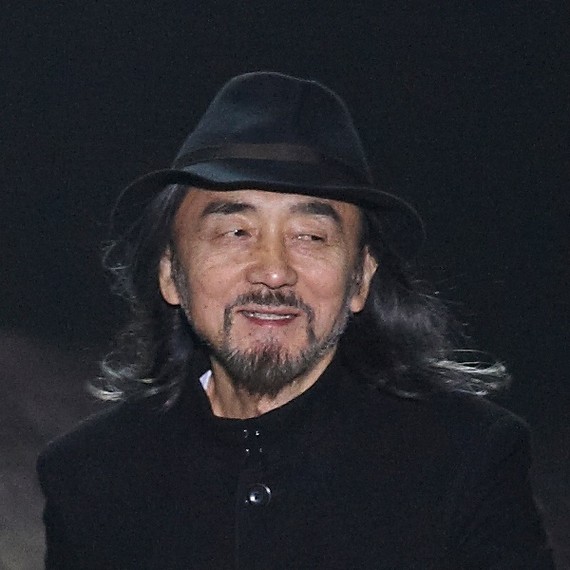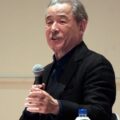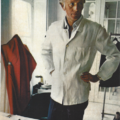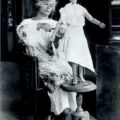Hiroko Koshino
August 13, 2018Hiroko Koshino was born on January 15th 1937 in Kishiwada City, Osaka, Japan. The Koshino name is very well-known in the Japanese fashion world – not only has Hiroko had a label there since 1964, but her mother, two younger sisters and now her daughter also run successful fashion labels too. Hiroko Koshino currently has five different women’s clothing lines, and together they have 250 shops worldwide – 200 of which are in Japan. Her style has always been about exploring traditional Japanese shapes in a modern way. Traditional kimono has been relegated to formal wear or special occasions only, and her desire is to bring it up to date and back on the streets of Japan.
Although several Japanese designers have found success in the West, breaking through in the 1980s by focussing on an East-meets-West aesthetic Hiroko Koshino’s ideas are less dramatically avant-garde than a designer such as Comme des Garcons, for example, and far more wearable for the stylish woman on the street. Her clothes are popular in Western fashion, but a runaway success in Japan, suggesting that they have struck a real chord with women who want to connect with their past, but also wear comfortable, functional clothing that looks stylish and smart without either too old-fashioned, as traditional kimono are, or too shocking and strange.
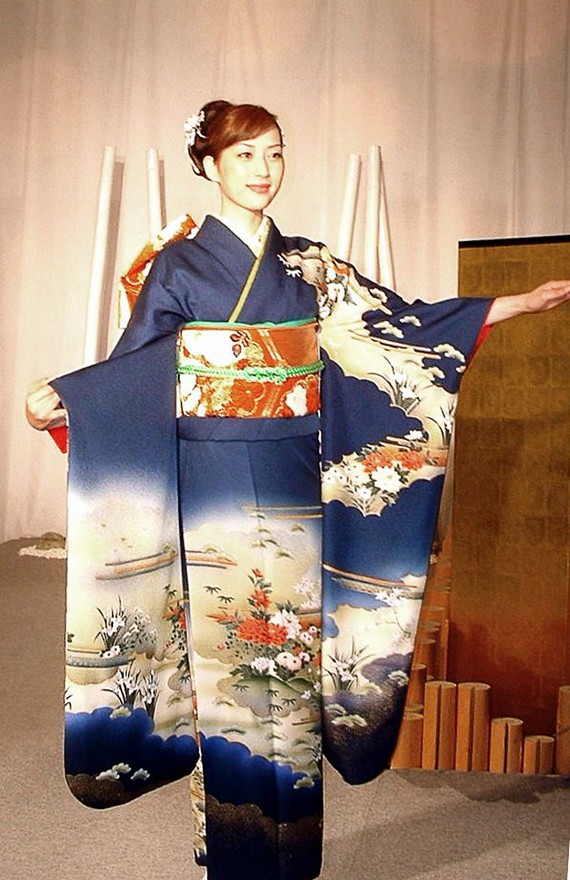
Kimono.
No machine-readable author provided. Lukacs~commonswiki assumed (based on copyright claims)., CC BY-SA 3.0, via Wikimedia Commons
Hiroko Koshino Style
Her clothing is exaggeratedly oversized, asymmetrical, and plays on a balance between masculine and feminine. When she started it made of natural fabrics, like silk, cotton and linen. It’s also in bright colours, although traditional dress codes in Japan dictate that bright colours are reserved for the young. Michiko Koshino’s clothes are for women of all ages. She doesn’t only work with kimono, but with tops, dresses, and trousers, but always with the distinctive two-dimensional Japanese design aesthetic and ideas of volume and layering.
“I love Japan and have been attracted to traditional Japanese culture. I’m trying to express oriental sensitivities in a modern, Western framework. What I think, what I feel, my lifestyle—these are the starting points for my designs. They give me confidence in and a sense of identity with my creations,” she explains.
Hiroko Koshino – Traditional Japanese Materials
Her collections intitially used natural fabrics and traditional Japanese prints, such as bamboo and crane patterns, but in the nearly fifty years of collections since the launch she has experimented with just about every known fabric, including decidedly non-traditional fur, metallics and knitwear, and patterns have embraced many influences. Her latest collection, AW18, looks right back to the 1980s with oversized dresses, tunics and capes made from knitted intarsia in block colours and geometric patterns. They still keep the signature loose and blocky construction which has been a constant from the start.
Though she has been sold worldwide almost since the inception of her brand, in the nineties she stopped showing on the Paris catwalk and closed her Parisian shop to focus on her Japanese customer base, showing in Osaka and other Japanese cities as well as Tokyo. Her work is incredibly popular in Japan, and her name well-known. But although she does have shops abroad they are far fewer than in Japan and her decision to concentrate on her home market means that her name is not as instantly recognisable as fellow Japanese designers of her generation and stature, such as Yohji Yamamoto or Issey Miyake.
Hiroki Koshino History
Hiroko Koshino comes from a very old and respected family. Her father was a tailor and mother a designer. They brought her up in appreciation of ancient art forms, and in particular she grew to love and be influenced by Kabuki Theatre. She studied at the famous Bunka Fashion College in Tokyo, graduating in 1961. Whilst she was studying, she won first prize in the design competition sponsored by the Nippon Designers Club. From 1961-1963 she had a job as a designer at the Komatsu Department Store, Tokyo. In 1964 she opened her first store, in Osaka. It was a boutique which sold not only haute couture but textiles, prêt-á-porter, children’s clothing, nightwear and housewares.
In 1977 she started showing each season at Tokyo Fashion Week, and has done so continually up till now. In 1978 she started showing at Alta Moda in Rome too, and was the first Japanese designer to do so. From 1982-1992, and 2009 onwards she has also shown in Paris. In 1989 she won the Osaka City award for Cultural Merit, in 1997 the Mainichi Fashion Grand Prix, and in 2001 the Osaka Art Awards. In 1997 she was also chosen to design the uniforms for the Kintetsu Buffalos baseball team. She has also designed the uniform for the Chosi City Girls School.
Hiroko Koshino – Exhibitions and brands
Hiroko Koshino has had several exhibitions, including the Roma Alta Moda Collection in 1978, a group show with her sisters Junko and Michiko calledThree Sisters,inOsaka in 1982, Hiroko Koshino, in Shanghai in 1984, and a group exhibition with Borek Sípek and Bambi Uden in Prague, 1994.
Her brands, which as of 1997 were estimated to generate $100 million a year,include Hiroko Koshino Couture, Hiroko Koshino Premier, Hiroko Koshino, Hiroko Koshino Resort, and Hiroko Bis, Hiroko Homme, Hiroko Koshino Golfas well as various licensing for bags, purses, hats, towels and tablewear, and menswear. In 2002 she launched a perfume.
The Koshino Family
Hiroko Koshino was married in 1960, divorced 1967 and has two children, Yuka and Yuma. Yuma is now a fashion designer herself, following in what has become the family tradition. Her work is becoming acclaimed. But better known than Yuma Koshino are her aunts, Junko and Michiko Koshino. In Japan, all three sisters are equally famous and respected as fashion designers. Their work has a similarirty to one another, yet each has its distinct signature. As well as the exhibition she held with them in 1982, Hiroko also showed a collection with Junko and Michiko and their mother, Ayumi, in the year 2000.




